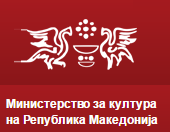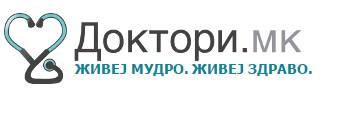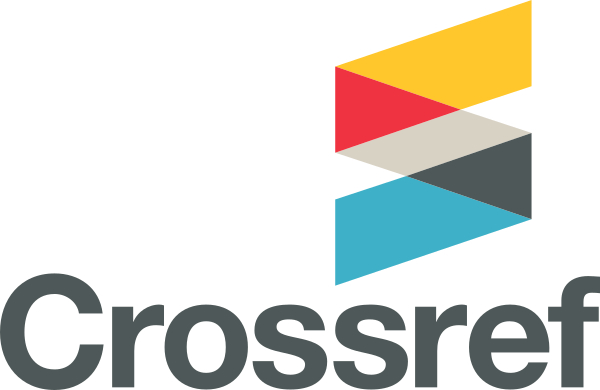JSER Policies
JSER Online
JSER Data
Frequency: quarterly
ISSN: 1409-6099 (Print)
ISSN: 1857-663X (Online)
Authors Info
- Read: 62804
|
ПРИКАЗ НА СЛУЧАЈ НА ДЕТЕ СО АУТИЗАМ
Весна ЛАЗАРОВСКА
Клинички Центар-Скопје Скопје, Македонија |
|
A PRESENTATION OF A CASE OF A CHILD SUFFERING FROM AUTISM
Vesna LAZAROVSKA
Clinical Center, Skopje Skopje, Macedonia |
|
Вовед |
|
Introduction |
||
|
Најинтензивниот период во развојот на говорот и јазикот е во првите три години од животот, периодот кога мозокот се развива и созрева. Овие способности најдобро се развиваат во опкружување што е богато со звуци, емоции, погледи и постојана изложеност на говор и јазик од другите. Коренот на овој развој е желбата да се комуницира или да се влезе во интеракција со околината (1).
|
|
The most intense period in the discourse and language is within the first three years form one’s life, a period when the brain develops and grows. These abilities can be best developed in an environment full of sounds, emotions, looks and consistent exposure to language and conversation by the others. The root of this development is the desire for communication or to get into interaction with the environment (1). |
||
|
Приказ на случајот |
|
Presentation of a case |
||
|
Машко дете С. В. родено во 1998 год. Во Заводот доаѓа првпат на 5 години и го посетува одделот за аутизам. При приемот е потврдена веке поставената дијагноза.
|
|
A boy, S. V. was born in 1998. He comes to the Institution at age 5 for the first time, and visits the autism section. The already known diagnosis was confirmed. |
||
|
Третман |
|
Treatment |
||
|
Во интервал од 15 месеци е направена редијагностика од сите членови на дијагностичкиот тим. Се направи компарација со статусот од приемот на случајот пред 15 месеци.
|
|
Within a time period of 15 months another diagnosis was made by all the members of the diagnostic team. It was compared with the previous status, 15 months ago.
|
||
|
|
|
|
||
|
Резултати |
|
Results |
||
|
Состојбата е подобрена. Се воспоставува прв контакт. Тој е краткотраен, но во него има емотивен трансфер и содржи невербална комуникација. Прифаќа допир и погледот подолго го задржува. Тестовна ситуација прифаќа, има соработка и учење преку имитација. Вниманието му е кусотрајно и повремено се изолира од ситуацијата. Едноставни вербални инструкции разбира, ги извршува и автоматски ги повторува. Во состојба е да повтори и повеќесложни зборови. При повторувањето на зборовите доаѓа до испревртување на слоговите во зборот или заменување и недискриминирање на гласовите слични по звучност. Прави проста реченица. Графомоториката е развиена, моливот го држи со десната рака. Буквите ги пишува, но не ги распознава. При боење излегува надвор од означеното. Брои до 20, деновите во неделата е во состојба да ги наброи. Прашања никогаш не поствува и во говорот спонтано не се вклучува. Одговара само на прашања за неговото име, презиме, од каде е, и прашања кои често му се поставуваат. |
|
The condition is better. The first contact is being made. It is not a long-lasting, but there is emotional transfer and nonverbal communication in it. He accepts touch and his look remains at one spot longer. He accepts the test situation; there is also a cooperation and learning through imitation. His attention is brief and from time to time he isolates himself from the situation he is in. He understands simple verbal instructions, commits them and repeats them automatically. He is also able to repeat more complex words. While repeating the words it comes to mixing the syllabus of the word up or replacing and not discriminating the voices that are similar in sound. He makes a simple sentence. The graph motor is developed; he holds the pencil with his right hand. He writes the letters, but he cannot recognize them. When he colors he goes over the line of limit He counts up to 20, and he can also name the days of the week. He never asks questions and does not get involved in conversations spontaneously. He only answers the questions about his name, surname, where he is from, and other questions which he has been often asked. |
||
|
|
||||
|
|
|
|
||
|
Заклучок |
|
Conclusion |
||
|
Споредувајќи ги првичните наоди со нив по временски интервал од 2 год. може да заклучиме дека со помош на правилно лекување и тимски рехабилитациски третман има релативно подобрување. |
|
Comparing previous reports to the ones made after 2 years, we can conclude that with a proper medical and team rehabilitation treatment there is a relative improvement. |
||
|
|
|
|
||
|
Препораки |
|
Recommendation |
||
|
|
|
||
|
|
|
|
||
|
|
|
|
||
|
Citation:Lazarovska V, Dimitrovska Zh. A Presentation of a Case of a Child Suffering From Autism. J Spec Educ Rehab 2005; 6(1-2):69-73. |
||||
|
|
||||
|
Литература/References |
|
|
||
|
1. Бојанин С, Пијашо Џ. Глумбиќ Н. Ауитизам данас, Завод за уџбенике и наставна средства, Београд, 2001. |
|
2. Fuentes J. et al, A presentacion of autism - Europe`s descripction of autism. |
||
Share Us
Journal metrics
-
 SNIP 0.059
SNIP 0.059 -
 IPP 0.07
IPP 0.07 -
 SJR 0.13
SJR 0.13 -
 h5-index 7
h5-index 7 -
 Google-based impact factor: 0.68
Google-based impact factor: 0.68
10 Most Read Articles
- PARENTAL ACCEPTANCE / REJECTION AND EMOTIONAL INTELLIGENCE AMONG ADOLESCENTS WITH AND WITHOUT DELINQUENT BEHAVIOR
- RELATIONSHIP BETWEEN LIFE BUILDING SKILLS AND SOCIAL ADJUSTMENT OF STUDENTS WITH HEARING IMPAIRMENT: IMPLICATIONS FOR COUNSELING
- EXPERIENCES FROM THE EDUCATIONAL SYSTEM – NARRATIVES OF PARENTS WITH CHILDREN WITH DISABILITIES IN CROATIA
- INOVATIONS IN THERAPY OF AUTISM
- THE DURATION AND PHASES OF QUALITATIVE RESEARCH
- REHABILITATION OF PERSONS WITH CEREBRAL PALSY
- DISORDERED ATTENTION AS NEUROPSYCHOLOGICAL COGNITIVE DISFUNCTION
- AUTISM AND TUBEROUS SCLEROSIS
- HYPERACTIVE CHILD`S DISTURBED ATTENTION AS THE MOST COMMON CAUSE FOR LIGHT FORMS OF MENTAL DEFICIENCY
- PEDAGOGICAL DIMENSIONS OF THE LEISURE
















